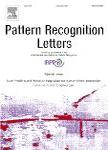版权所有:内蒙古大学图书馆 技术提供:维普资讯• 智图
内蒙古自治区呼和浩特市赛罕区大学西街235号 邮编: 010021

作者机构:Xi An Jiao Tong Univ Inst Artificial Intelligence & Robot Xian 710049 Peoples R China Shanghai Univ Sch Sci Dept Math Shanghai 200444 Peoples R China
出 版 物:《PATTERN RECOGNITION LETTERS》 (模式识别快报)
年 卷 期:2010年第31卷第9期
页 面:791-799页
核心收录:
学科分类:08[工学] 0812[工学-计算机科学与技术(可授工学、理学学位)]
基 金:National Basic Research Program of China [2007CB311005] National Natural Science Foundation of China [60903122, 90820017, 90920008]
主 题:Affine point set registration Iterative closest point algorithm Lie group Singular value decomposition Independent component analysis
摘 要:The traditional iterative closest point (ICP) algorithm is accurate and fast for rigid point set registration but it is unable to handle affine case. This paper instead introduces a novel generalized ICP algorithm based on lie group for affine registration of m-D point sets. First, with singular value decomposition technique applied, this paper decomposes affine transformation into three special matrices which are then constrained. Then, these matrices are expressed by exponential mappings of lie group and their Taylor approximations at each iterative step of affine ICP algorithm. In this way, affine registration problem is ultimately simplified to a quadratic programming problem. By solving this quadratic problem, the new algorithm converges monotonically to a local minimum from any given initial parameters. Hence, to reach desired minimum, good initial parameters and constraints are required which are successfully estimated by independent component analysis. This new algorithm is independent of shape representation and feature extraction, and thereby it is a general framework for affine registration of m-D point sets. Experimental results demonstrate its robustness and efficiency compared with the traditional ICP algorithm and the state-of-the-art methods. (c) 2010 Elsevier B.V. All rights reserved.